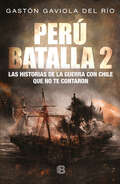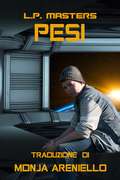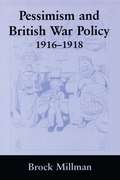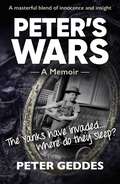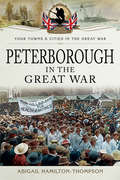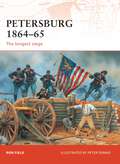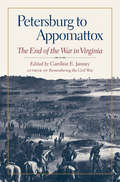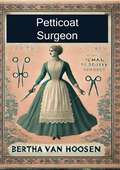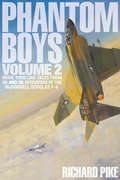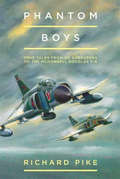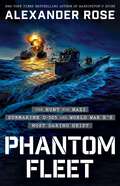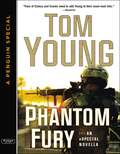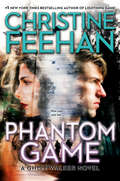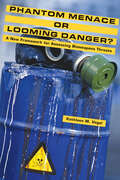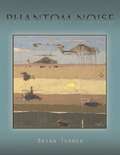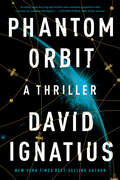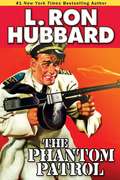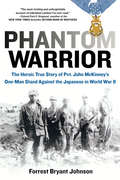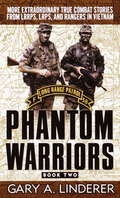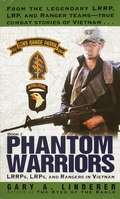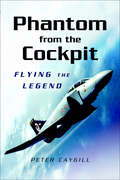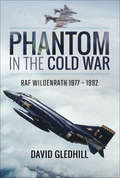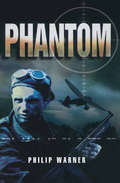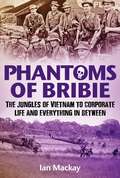- Table View
- List View
Perú batalla 2: Las historias de la guerra con Chile que no te contaron
by Gastón GaviolaGastón Gaviola del Río regresa con Perú Batalla 2, el libro donde descubriremos la historias que no sabías sobre la Guerra del Pacífico La Guerra con Chile marca un antes y un después en la historia nacional. Nuestra identidad también se construye sobre sus cimientos. En Perú Batalla 2, el periodista Gastón Gaviola da vida a sus episodios menos conocidos y a aquellos que, por su relevancia, iluminan el país que éramos entonces. ¿Qué rol tuvieron las mujeres? ¿Qué ocurrió en San Pablo donde los niños se enfrentaron contra el enemigo? ¿Estábamos militarmente preparados? ¿Qué pasó después de la caída de Lima? Este libro da lugar a personajes heroicos en las circunstancias más adversas, recrea nuestros triunfos en una guerra que perdimos y muestra el lado más cruel de ambos bandos. La intención es que la emoción y la sorpresa capturen la atención del lector y siembren un ansia saludable por descubrir y comprender la Historia y, con ello, el Perú que hemos forjado.
Pesi
by L. P. MastersLa nave da guerra spaziale nella quale il quattordicenne Kaden Lowery è arruolato è sotto attacco da parte di un nemico invisibile: la gravità. Kaden deve fare i conti con il suo passato e sulla sua vera natura per salvare se stesso e l'equipaggio.
Pessimism and British War Policy, 1916-1918 (British Politics and Society)
by Brock MillmanThis analysis of Britains war policy during the last years of the Great War argues that it was strongly affected by a mood of pessimism. The policy was revised after the defeats suffered by the allies in 1917, so much so that Britain almost "tumbled into peace" the following year.
Peter's Wars: A Memoir
by Peter GeddesThis fiercely funny memoir is set in Melbourne during the 1940s. The entrenched Protestant–Catholic divide of those times informs the narrative. Juxtaposed is the gulf between Melburnians and the thousands of Yanks stationed in their city following Pearl Harbor; the dizzying effect on the women had far-reaching consequences. Growing resentment and the increasing fear of a Japanese invasion add to the tension. Born in 1938, Peter relates that he was conceived twice. The conception resulting in his parents&’ marriage occurs in the back of a &’36 Chevy. Five months after the wedding, his mother (who wasn&’t above telling a little fib) experiences the first signs of pregnancy: it is then she knows that she doesn&’t want to be a mother. As the war escalates Peter&’s father joins the RAAF, leaving Peter with a mother who resents having a small child to care for. Neglected, cold and hungry, shame engulfs him when his mother entertains a stream of GIs. Blending the matter-of-fact voice of a child with the accomplished voice of a journalist, Peter&’s Wars captures the precise detail of the period: a kitchen without heating or running water, black market grog, rationing … the combination of satire and realism highlighting human truths with stark acuity. When Peter turns ten, his rich Catholic grandmother decides his religious education should not be neglected any longer and enrols him at Xavier College. There, Peter learns about eternal damnation and hellfire. Terrified, he responds by trying to make up for ten years of religious ignorance by attending daily mass and amassing enough &‘good&’ points to save his soul. Peter&’s Wars is a memoir that begins and ends with the defining factors of every human life: time and place. PRAISE FOR THE BOOK'Peter's vivid writing has a fly-on-the-wall immediacy which, when filtered through a child's all-seeing eyes, captures the very essence of Melbourne society and Australia as a whole during World War II.' - Sean Doyle, author of Australia's Trail-Blazing First Novelist: John Lang 'This sparkling memoir is as uniquely Australian as Summer of the Seventeenth Doll and The Castle.&’ - Carrolline Rhodes, author and editor
Peterborough in the Great War (Your Towns And Cities In The Great War Ser.)
by Abigail Hamilton-ThompsonWhen news of the war first broke out in 1914, the citizens of Peterborough could not have been prepared for the changes that would occur over the next four years. This book takes a detailed looks at Peterborough's involvement in the Great war from when it commenced in July 1914, to the Armistice in November 1918, covering in great detail its affect on the city and the every day lives of its people. For example, the factory Werner Pfeiderer & Perkins at Westwood Works was forced to change its name to Perkins Engineers due to the anti-German feeling at the outbreak of the war.One in six of Peterborough's working age men did not return from the front line, and in one single day forty-six men from the city lost their lives. Many of these men came from Peterborough's factories. As a result, these factories looked to women to produce armaments and tanks, as well as repairing guns used in the trenches.Edith Cavell, the famous British nurse, grew up in Peterborough and was shot dead in 1915 for assisting the escape of Allied soldiers from Belgium. Peterborough in the Great War is a poignant testimony not only to her bravery, but that of the city's people and their momentous efforts.
Petersburg 1864-65
by Peter Dennis Ron FieldIn 1864, Petersburg, Virginia became the setting for one of the last great campaigns of the American Civil War (1861-1865) and the longest siege in American History. After his failure to capture Richmond in the Spring, General Ulysses S. Grant decided to strangle the life out of the Confederate Army of Northern Virginia by surrounding the city of Petersburg and cutting off General Robert E. Lee's supply lines. The ensuing siege would carry on for nearly ten months, involve 160,000 soldiers, and see a number of pitched battles including the Battle of the Crater, Reams Station, Hatcher's Run, and White Oak Road. But around these battles were long days of living in trenches, enduring poor diet and winter weather, and suffering constant artillery bombardment. In April of 1865, Grant ordered a sweeping offensive against the beleaguered Confederates, which broke Lee's right flank and forced him to retreat to Appomattox Court House, where he surrendered a week later.Written by an expert on the American Civil War, this book examines the last clash between the armies of U.S. Grant and Robert E. Lee.
Petersburg to Appomattox: The End of the War in Virginia (Military Campaigns of the Civil War)
by Caroline E. JanneyThe last days of fighting in the Civil War's eastern theater have been wrapped in mythology since the moment of Lee's surrender to Grant at Appomattox Court House. War veterans and generations of historians alike have focused on the seemingly inevitable defeat of the Confederacy after Lee's flight from Petersburg and recalled the generous surrender terms set forth by Grant, thought to facilitate peace and to establish the groundwork for sectional reconciliation. But this volume of essays by leading scholars of the Civil War era offers a fresh and nuanced view of the eastern war's closing chapter. Assessing events from the siege of Petersburg to the immediate aftermath of Lee's surrender, Petersburg to Appomattox blends military, social, cultural, and political history to reassess the ways in which the war ended and examines anew the meanings attached to one of the Civil War's most significant sites, Appomattox. Contributors are Peter S. Carmichael, William W. Bergen, Susannah J. Ural, Wayne Wei-Siang Hsieh, William C. Davis, Keith Bohannon, Caroline E. Janney, Stephen Cushman, and Elizabeth R. Varon.
Petticoat Surgeon
by Bertha Van HoosenPetticoat Surgeon by Bertha Van Hoosen is a remarkable memoir that chronicles the life and career of one of the pioneering women in American medicine. Dr. Van Hoosen’s autobiography provides an inspiring and intimate look at her journey to becoming a renowned surgeon during a time when the medical field was dominated by men.Born in 1863, Bertha Van Hoosen overcame numerous societal and professional obstacles to pursue her passion for medicine. "Petticoat Surgeon" captures her relentless determination, her struggles, and her triumphs as she navigates the challenges of medical school, internship, and eventually, her surgical practice. The book offers a vivid portrayal of her experiences and the broader historical context of women's evolving role in medicine.Van Hoosen’s narrative is filled with personal anecdotes, from her early fascination with anatomy to her battles against gender discrimination and skepticism from her male counterparts. Her story is not just one of personal achievement, but also of advocacy, as she tirelessly worked to improve conditions for women in the medical profession and to advance medical education.The memoir highlights her significant contributions to medicine, including her innovations in obstetrics and gynecology, and her leadership roles in various medical organizations. Van Hoosen’s pioneering spirit and dedication to her patients and profession shine through in every chapter, making "Petticoat Surgeon" a powerful testament to her legacy.Dr. Van Hoosen’s writing is both engaging and insightful, offering readers a unique perspective on the medical field during the late 19th and early 20th centuries. Her story is an essential read for anyone interested in the history of medicine, women’s studies, or the inspiring journeys of trailblazers who broke barriers and paved the way for future generations."Petticoat Surgeon" stands as a tribute to Bertha Van Hoosen’s extraordinary life and enduring impact on the world of medicine, celebrating her achievements and the progress she championed for women in the profession.
Phantom Boys Volume 2: More Thrilling Tales From UK and US Operators of the McDonnell Douglas F-4
by Richard PikeThe highly anticipated follow-up has &“more scintillating stories from both the front and rear cockpits of one of the world&’s most legendary jet fighters&” (Air Classics). Once again Richard Pike has brought together brilliant, hitherto unpublished accounts across eighteen chapters. And now there is coverage of the Americans. So, with both British and American perspectives, Phantom Boys 2 is packed with exhilarating action. From combat in the Vietnam War to life after the Falklands War, readers will experience a variety of wartime and peacetime tales. An array of narratives from air and ground crew cover adventures across the world; from the UK, US and Germany to the Far East. It also includes the fascinating story of one female fighter controller&’s chance to fly in a Phantom during the 1970s. Throughout the book Richard Pike captures the drama and emotion of life in the cockpit. With such detailed stories, readers will be gripped by this captivating book.&“Pike has done an excellent job of drawing the reader into the cockpit and then into the skies. The shared tales are engaging and quickly read. While each tale is relatively short—typically less than fifteen pages—all are packed with the detalis, sights, and sounds of flying one of the modern age&’s most iconic jet fighters.&” —Air Power History
Phantom Boys: True Tales from UK Operators of the McDonnell Douglas F-4
by Richard Pike&“A cracking read&” on the twin-engined supersonic long-range fighter bomber from the bestselling author of the Hunter Boys and Lightning Boys volumes (Britain at War). Originally developed for the US Navy, the McDonnell Douglas F-4 fighter-bomber first flew in the spring of 1958. It then entered service for the US Navy in 1961, and in 1969 with the Fleet Air Arm and RAF in the UK. Regarded as one of the most versatile fighters ever built, the Phantom F-4 was the US Navy&’s fastest and highest-flying aircraft. It was flown by both US military demonstration teams (Navy Blue Angels and the Air Force Thundercats) from 1969 to 1973. It ended its service in 1991 with the RAF. But it continues to serve a variety of air forces across the world, with some still in service fifty years after its first flight. Throughout the twenty chapters of this book, thirteen contributors will take readers across the world with adventures in the Falkland Islands, the United States of America, the United Kingdom, the Far East and Germany. There are anecdotes of reconnaissance missions, encounters with the Russian Tupolevs, record-breaking flights and life on HMS Ark Royal. The scope, flair and pace of the writing in this book will appeal to the general reader as well as to the enthusiast.
Phantom Fleet: The Hunt for Nazi Submarine U-505 and World War II's Most Daring Heist
by Alexander RoseFrom the New York Times bestselling author of Washington's Spies, "a page-turning thriller" (James M. Scott) about one of the greatest heists in history: the U.S. Navy&’s clandestine capture of a Nazi U-boat at the climax of World War II. Shortly before noon on June 4, 1944, the sonar operator on a destroyer prowling off the coast of West Africa heard a sharp, metallic ping. The sound could mean only one thing: The German submarine that their hunter-killer group had been tracking, U-505, was lurking somewhere below. The ensuing struggle between exhausted hunter and venomous prey would make history when American sailors boarded an enemy warship at sea for the first time since the War of 1812. That day&’s victory was the culmination of an unrelenting campaign against the Nazi submarine threat by the U.S. Navy&’s &“Tenth Fleet&”—a mysterious unit that could predict the locations and movement of Hitler&’s U-boats. Run by Commander Kenneth Knowles, Tenth Fleet had guided Captain Dan Gallery to U-505; to repay the favor, Gallery was going to steal an Enigma machine for him. Now all they had to do was to make an entire U-boat, its crew, and its secrets vanish into thin air . . . In this swashbuckling adventure story, bestselling historian Alexander Rose draws on long-classified encrypted documents and intercepted German transmissions to reveal in full, for the first time, how an owlish egghead and a glory-seeking buccaneer teamed up to score the richest prize on the high seas.
Phantom Fury
by Tom YoungIn Tom Young's new novel Sand and Fire, a six-foot-eight black Marine gunnery sergeant named A.E. Blount teams up with Young's series heroes Michael Parson and Sophia Gold to fight an extraordinary terrorist in northern Africa. But it was a decade earlier, during Operation Phantom Fury in Fallujah, that Staff Sergeant Blount really learned what war was. In this remarkable novella, riveting in its action, shocking in its candor, we see through his eyes as Blount and his comrades discover that the limits of what men will do, both for good and evil, go beyond anything they ever imagined; that the line between friend and enemy is much more complicated than they thought -- and that courage and mercy come in the most surprising of forms. At the time of his retirement as a senior master sergeant in 2013, Tom Young had logged nearly five thousand hours as a flight engineer for the Air National Guard in Afghanistan, Iraq, Kosovo, Bosnia, and elsewhere. He is also the author of The Mullah's Storm, Silent Enemy, The Renegade, and The Warriors.
Phantom Game (A GhostWalker Novel #18)
by Christine FeehanTwo predators collide with unbridled passion in this intoxicating GhostWalker novel from #1 New York Times bestselling author Christine Feehan. Jonas &“Smoke&” Harper has watched his brothers find their perfect mates, never imagining he&’d actually meet someone who complements every part of him—even the monster that lurks within. But his instant connection with Camellia goes far beyond wanting the intelligent, beautiful, and lethal woman in his bed. They are two parts of a whole, linked to each other and to a larger network that exists everywhere around them. Camellia has lived on her own for a long time, relying on her unique psychic abilities to keep her safe. She knows that Jonas was literally made for her, and that makes their addictive connection more dangerous than a thousand enhanced super soldiers. Once the larger threat looming over them is dealt with she&’s going to get far away as fast as she can. Life has taught her that the only one she can truly trust is herself. Jonas can sense Camellia is going to run—and the hunter inside doesn&’t want to let go. Not when he knows how good they&’ll be together. So he&’ll just have to use all of his considerable skills to convince her to stay....
Phantom Leader
by Mark BerentJanuary, 1968. The full fury of the TET Offensive is about to explode, forever changing the lives of America's bravest warriors: FAC pilot Toby Parker, escaping through the jungle, is trapped in the middle of the tank attack on Lang Tri. Major "Flak" Apple tumbles from the skies and into the hands of the jailers of Hanoi's infamous Hoa Lo Prison. Special Forces Colonel Wolf Lochert is charged with the murder of an enemy agent. U.S.A.F. Major Court Bannister faces a choice that could make him Vietnam's first air ACE - or end his military career altogether.
Phantom Menace or Looming Danger?: A New Framework for Assessing Bioweapons Threats
by Kathleen M. VogelA call for a new way to assess bioweapon threats—recognizing the importance of the sociopolitical context of technological threats.The horrifying terrorist attacks on September 11, 2001, and the anthrax strikes that soon followed gave the United States new reason to fear unconventional enemies and atypical weapons. These fears have prompted extensive research, study, and planning within the U.S. military, intelligence, and policy communities regarding potential attacks involving biological weapons. In Phantom Menace or Looming Danger?, Kathleen M. Vogel argues for a major shift in how analysts assess bioweapons threats. She calls for an increased focus on the social and political context in which technological threats are developed.Vogel uses case studies to illustrate her theory: Soviet anthrax weapons development, the Iraqi mobile bioweapons labs, and two synthetic genomic experiments. She concludes with recommendations for analysts and policymakers to integrate sociopolitical analysis with data analysis, thereby making U.S. bioweapon assessments more accurate. Students of security policy will find her innovative framework appealing, her writing style accessible, and the many illustrations helpful. These features also make Phantom Menace or Looming Danger? a must-read for government policymakers and intelligence experts.“This is an engrossing book that exemplifies what STS can bring to broader issues of policymaking in the US and potentially beyond, and it is well worth reading.” —Carla Nappi, New Books in Science, Technology, and Society“Kathleen Vogel has authored one of the most important books written about biological weapons in recent years. . . . Vogel tackles head-on the conventional wisdom regarding the biological weapon (BW) threat, successfully, challenging assumptions that have gone largely unexamined by the broader biodefense community. . . . She also uncovers some deeper organizational and social forces that have shaped US intelligence and threat assessments since the end of international security, not just those with an interest in biodefense or intelligence. This, this book is a must-read for scholars and practitioners in the field of international security, not just those with an interest in biodefense or intelligence.” —Gregory D. Koblentz, Nonproliferation Review“Intriguing, original, and deeply informed. Focusing on potential threats, Vogel shows in engaging historical detail that technical problems are inherently social. She has made an important scholarly contribution to science and technology studies and to studies of intelligence. At the same time, she speaks directly to the policy world. The combination of depth of scholarship and practical implication is remarkable.” —Lynn Eden, Center for International Security and Cooperation, Freeman Spogli Institute for International Studies, Stanford University
Phantom Noise
by Brian TurnerIn the aftermath of best-selling Here, Bullet, Brian Turner deftly illuminates existence as both easily extinguishable and ultimately enduring. These prophetic, osmotic poems wage a daily battle for normalcy, seeking structure in the quotidian while grappling with the absence of forgetting.
Phantom Orbit: A Thriller
by David Ignatius“A meaty, slow-burning spy thriller that combines geopolitics with a primer on celestial mechanics.” —Steven Poole, Wall Street Journal A subtle and masterful novel from a prescient voice on the cutting edge of spy literature. David Ignatius is known for his uncanny ability, in novel after novel, to predict the next great national security headline. In Phantom Orbit, he presents a story both searing and topical, with stakes as far-reaching as outer space. It follows Ivan Volkov, a Russian student in Beijing, who discovers an unsolved puzzle in the writings of the seventeenth-century astronomer Johannes Kepler. He takes the puzzle to a senior scientist in the Chinese space program and declares his intention to solve it. Volkov returns to Moscow and continues his secret work. The puzzle holds untold consequences for space warfare. The years pass, and they are not kind to Volkov. After the loss of his son, a prosecutor who’d been too tough on corruption, and Russia’s invasion of Ukraine, Volkov makes the fraught decision to contact the CIA. He writes: Satellites are your enemies, especially your own. . . . Hidden codes can make time stop and turn north into south. . . . If you are smart, you will find me. With this timely novel, Ignatius addresses our moment of renewed interest in space exploration amid geopolitical tumult. Phantom Orbit brims with the author’s vital insights and casts Volkov as the man who, at the risk of his life, may be able to stop the Doomsday clock.
Phantom Patrol, The
by L. Ron HubbardA triumphant tale of heroes, honor and impossible odds. On the trail of dope runners on the high seas, Coast Guard CPO Johnny Trescott receives an SOS from a transport plane that's crashed and sinking. With lives at stake, Johnny must cut off his pursuit and rescue the downed plane.Unfortunately, the dope-smuggling pirate he's chasing hears the same alarm, and greets Johnny and his crew at the crash scene with something far more than they bargained for."This is a rip-roaring, old-fashioned adventure like the kind they don't make any more. A blast for Hubbard fans and pulp fiction lovers."--Library Journal* An International Book Awards Finalists
Phantom Warrior
by Forrest Bryant JohnsonThis is the story of John McKinney who received the Medal of Honor for his actions against a Japanese surprise attack. On May 11, 1945, McKinney returned fire on the Japanese attacking his unit, using every available weapon-even his fists-standing alone against wave after wave of dedicated Japanese soldiers. At the end, John McKinney was alive-with over forty Japanese bodies before him. This is the story of an extraordinary man whose courage and fortitude in battle saved many American lives, and whose legacy has been sadly forgotten by all but a few. Here, the proud legacy of John McKinney lives on.
Phantom Warriors: Book 2
by Gary LindererMORE GRIPPING, NO-HOLDS-BARRED LRRP ACCOUNTSFROM THE FRONT LINESDuring the Vietnam War, few combat operations were more dangerous than LRRP/Ranger missions. Vastly outnumbered, the patrols faced overwhelming odds as they fought to carry out their missions, from gathering intelligence, acting as hunter/killer teams, or engaging in infamous "Parakeet" flights- actions in which teams were dropped into enemy areas and expected to "develop" the situation. PHANTOM WARRIORS II presents heart-pounding, edge-of-your-seat stories from individuals and teams. These elite warriors relive sudden deadly firefights, prolonged gun battles with large enemy forces, desperate attempts to help fallen comrades, and the sheer hell of bloody, no-quarter combat. The LRRP accounts here are a testament to the courage, guts, daring, and sacrifice of the men who willingly faced death every day of their lives in Vietnam.From the Paperback edition.
Phantom Warriors: Book I: LRRPs, LRPs, and Rangers in Vietnam (Phantom Warriors #1)
by Gary LindererHere are some of the most courageous missions executed by six-man teams on their own deep behind enemy lines.
Phantom from the Cockpit: Flying the Legend
by Peter CaygillThe McDonnell Douglas F-4 Phantom was the outstanding aircraft in many of the Western World's air forces during the 1960s and 70s. It played a key role in the 'Cold War' and saw action in Vietnam. It first flew in 1958 and went into operation with the US Navy in 1960. During its long front-line life it flew in the roles of an interceptor, fighter-bomber and reconnaissance aircraft.Apart from giving a comprehensive overview of the Phantom's history, this book looks particularly at the experiences of the Royal Air Force and Fleet Air Arm when they received a new model designed with a British Rolls-Royce turbofan instead of the original American power-plant. All was not sweetness and light when the first trials commenced and this book traces its development and progression from being a carrier-based attack aircraft flown by the Fleet Air Arm to the many successful roles it played as a land-based aircraft with the RAF.
Phantom in the Cold War: RAF Wildenrath, 1977–1992
by David GledhillAn RAF veteran presents an in-depth study of one of the Cold War&’s most effective fighter, defense, and reconnaissance planes. The McDonnell Douglas F4 Phantom was a true multi-role combat aircraft. Introduced into the Royal Air Force in 1968, it was employed in ground attack, air reconnaissance and air defense roles. Even after the arrival of the Jaguar in the early 1970s, it continued to play a significant role in air defense. In its heyday, the Phantom was Britain&’s principal Cold War fighter. There were seven UK-based squadrons, two Germany-based squadrons, and a further Squadron deployed to the Falkland Islands.Phantom in the Cold War focuses on the aircraft&’s role as an air defense fighter, exploring its contribution to the Second Allied Tactical Air Force at RAF Wildenrath during the Cold War. Author David Gledhill, who flew the Phantom operationally, also recounts the thrills, challenges, and consequences of operating this temperamental jet at extreme low-level over the West German countryside, preparing for a war which everyone hoped would never happen.
Phantom: Uncovering The Secrets Of The Ww2 Special Forces Unit
by Philip WarnerThe story of the shadowy special reconnaissance unit whose intelligence helped the Allies win World War II. It operated in Italy, Sicily, Austria, France, Belgium, Holland, and Germany. It was at Dieppe with the Commandos, in France with the SAS, at Arnhem with Airborne, and in Germany until the surrender. Phantom—aka GHQ Liaison Regiment—was one of the most secret and most effective of the wartime special regiments. It was formed in 1939 with the mission of finding out exactly where all the Allied forward positions were—a task which required linguistic ability, unlimited tact, and radio expertise. After Dunkirk, its squadrons at first kept an eye on all invasion points, before deploying to Greece and to the Middle East. An indispensable direct communication link between the forward patrols and command headquarters, its members were as varied and colorful as its tasks. Among them were a Cambridge college postgraduate, three professors, a famous actor-playwright, a film star, a famous sculptor, a steward of the Jockey Club, a commissioner of the Metropolitan Police, and numerous authors and journalists. This fascinating history goes beyond Phantom&’s aura of mystery and shows how it was so successful in its role of tracking both allied and enemy movements and relaying vital information direct to commanders.
Phantoms of Bribie: The jungles of Vietnam to corporate life and everything in between
by Ian MackayPhantoms of Bribie is a highly readable blend of an engaging yarn and a fascinating portrayal of operational service in Vietnam as an infantry company commander, leading some 100 fine young national service and regular soldiers in close quarter jungle fighting. Ian's training within the SAS and operational service in Malaya served him well in Vietnam where he was a company commander of Bravo Company 6 RAR. During Operation Bribie he lead his outnumbered company’s desperate bayonet charge, followed by close quarter fighting, against a well dug in and determined enemy. This action sharply illustrated the courage, the battle discipline and the spirit of the well trained Australian combat infantryman. On leaving the Army, Ian excelled in the Australian and international business worlds. A multi-talented sportsman, Rugby Union remained his passion, in which he performed to international level. Ian outlines the difference between leadership and management using many interesting and often humorous examples. Both qualities are vital for successful senior operatives in both civilian and military organisations. Most importantly, as Ian explains, a good leader must also be an effective decision maker and a good communicator. This book is a tribute to Ian Mackay’s qualities as a battlefield commander, an international sportsman, a successful businessman and an entertaining author.
